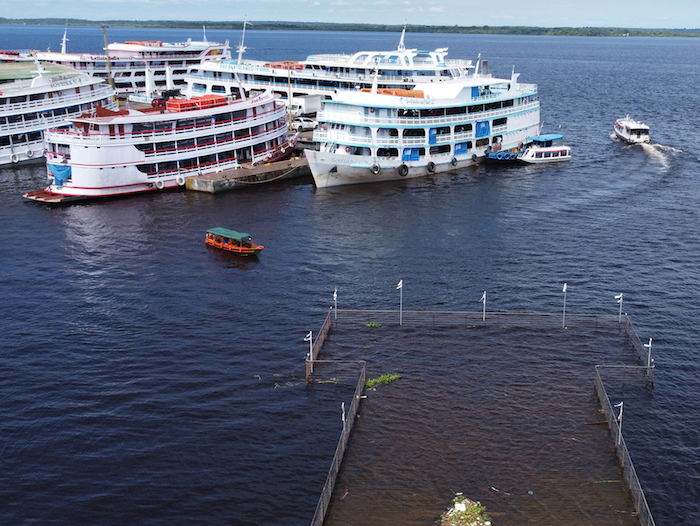
Op-Ed: New infrastructure, new rules for offshore wind
Written by
Assessment and risk analysis is needed for planning/designing, with one of the risks being water levels rising because of climate change. [Credit: BMT]
By Shivaprakash Rao, Head of Consulting Critical Infrastructure and Energy Transition, BMT
This year’s COP26 global climate summit is sending a clear message reinforcing the commitment of world leaders to secure global net zero by mid-century. But the fact remains, the ongoing transition to clean energy is daunting not only in scale but also in speed. A key part of achieving these ambitious targets will be encouraging investment in clean energy, and it’s evident the renewables sector will play a significant role in meeting the ambitious decarbonization targets set forward by the UN’s climate authority.
Offshore Wind
Offshore wind is set to play a pivotal role in driving the uptake of renewable energy, with capacity forecasted to increase from 35GW to 235GW over the coming decade. However, offshore wind’s role in decarbonization can only be viable if the installation, ongoing operation and maintenance of wind farms can be supported by port and shore side infrastructure that is fit-for-purpose and able to accommodate new equipment, new vessels and new technologies.
There are many moving parts during the early planning stage of offshore wind projects, centering on policy, regulations, permissions, technical aspects and commercial details. Projects are bound by timelines, and investors value reaching Final Investment Decisions (FID) and first power dispatches quickly. One thing that can be guaranteed is that any uncertainty present during early development stages will result in the risk of increased costs and project delays.
The redevelopment of existing port and coastal infrastructures for offshore wind installations requires a major shift in operational approach to accommodate the unique handling, storage and transportation requirements of often hugely sizeable assets. Not only that, ports must be able to ensure unimpeded access for larger, specialized vessels that transport these components to the operational field.
Preventing Uncertainty
At the outset of project planning for installing and maintaining offshore wind installations, port owners and operators must take into account every aspect of preparedness including determining the environmental and operational impact of readying ports for these operations. Particularly as turbines become much larger and intricate in design, port assessment studies become more important as operators need an in-depth understanding of the handling requirements for the installation of turbines and offshore substation transport to ensure they can be managed safely and effectively.
When assessing locations for offshore wind installations, sites should be thoroughly evaluated to understand the impact of operations on the existing infrastructure, as well as any potential implications for the environment or the local community, for example local fishermen who rely on these ports and waterways for their livelihood. Other, more technical factors that must be considered include annual energy production (AEP), water depth, foundation type, cable alignment, shore landing and marine traffic, all of which are important determinants of capital and operating cost. If evaluated thoroughly and carefully, the selected site will support offshore wind installations that enhance shore-based economies, as well as creating jobs and fostering a blue economy, rather than create challenges for ports and their local communities.
Site Assessment
During the early planning stage of an offshore installation project, wind resource estimates are used to deliver the critical insights that derive Annual Energy Production and capacity factors for the wind farm, which in turn determines the project’s revenue and financial viability. Additionally, feed-in tariffs and the Levelized Cost of Electricity (LCOE) are the two important parameters that will be evaluated by regulators, utilities providers and investors to ensure the viability of the site. To ensure these are calculated accurately, operators need to measure, model and analyze a wide range of high-resolution wind metocean offshore forecasting data, including acquiring and analyzing wind, weather and sea state data to inform design, engineering and operational decision-making.
In supporting offshore wind installation projects from the outset of planning, BMT has conducted comprehensive risk analyses with subject matter experts and stakeholder consultations to identify, evaluate and mitigate high impact risks. For residual risks, a comprehensive risk response plan should be prepared to monitor and manage these during the next phase of the project, and this activity also serves as inputs to the financial model as scenarios and sensitivities.
With a thorough assessment of the marine environment and metocean data during initial exploration, operators can increase resource availability through eliminating unnecessary downtime, they can assess the operability and safety of floating and fixed structures during design, and they can support feasibility and engineering studies to ensure effective installation operations.
Conclusion
Port operations can only be optimized through minimizing the number of days where operations are halted due to unexpected delays. By identifying and supporting the delivery of sustainable and efficient solutions through accurate surveying and planning, operators will be able to put technologies and measures in place that will support offshore wind operations throughout a port or terminal’s lifetime.
Through thorough and accurate surveying of the local environment and waterways, offshore wind installation projects can be carried out in a way that supports a healthy coastal and estuary environment, whilst ensuring that human activities such as fishing, tourism and recreation are protected for future generations. With careful early planning in site selection, wind resource estimation, port readiness, supply chain planning and digital strategies, the challenges that can curtail offshore wind developments become opportunities, and those that support the global drive towards decarbonization.




